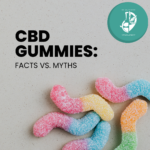As the demand for hemp-derived cannabinoids continues to grow, concerns are rising about the safety and regulation of products in the cannabinoid market. While cannabinoids like CBD and THC have been touted for their potential health benefits, the lack of regulation and standardization in the industry has led to confusion and potential harm for consumers. As a result, a harm reduction approach is being adopted to safeguard consumers in the cannabinoid market. This approach aims to educate consumers on safe usage practices and promote regulatory measures to ensure product safety and efficacy. In this news article, we will explore the role of harm reduction in the cannabinoid market and its potential to protect consumers and promote responsible use of these products.
Research and Expanded Access
The growing interest in a harm reduction approach to hemp-derived cannabinoids and other cannabis products has led to an increased need for research and expanded access. While medical cannabis laws have expanded access to cannabis plant derivatives for medical purposes, concerns over mental health, drug abuse, and adverse events persist. According to the Substance Abuse and Mental Health Services Administration, cannabis use has been associated with prenatal cannabis exposure, cannabis intoxication, and as a gateway to other drugs.
The World Drug Report by the United Nations Office on Drugs and Crime also highlights the need for policy makers to consider the negative consequences of recreational cannabis use. Previous research suggests that the use of natural cannabinoids found in marijuana may be effective in treating particular diseases, however, it is important to note that not all claims necessarily represent current scientific understanding. As such, there is a growing need for clinical trials, systematic reviews, and cannabis research to inform public health and cannabis therapeutics. This includes the study of cannabis cannabinoid research, as well as the use of synthetic cannabinoids and dietary supplements. It is important to ensure that research and expanded access is available to both medical users and pregnant women, while also considering the potential harm reduction benefits for substance use disorder and the use of other substances.
Medicinal vs. Recreational Cannabis Users
Medicinal cannabis users often take a harm reduction approach to hemp-derived cannabinoids. This approach aims to reduce the negative consequences of drug abuse and other substances on mental health and overall wellbeing. Medical cannabis laws have been put in place to regulate cannabis use, including prenatal cannabis exposure, and to ensure that medical cannabis users have access to proper mental health services administration. Clinical trials and systematic reviews have been conducted to explore the potential therapeutic benefits of cannabis plant and its natural cannabinoids.

On the other hand, recreational cannabis use has been linked to harmful consequences such as substance use disorder, cannabis intoxication, and adverse events. The cannabis industry continues to grow despite concerns about the negative impact of smoking cannabis and synthetic cannabinoids. Policy makers are grappling with how to balance accepted medical use of cannabis with the risks associated with recreational use.
The World Drug Report from the United Nations Office on Drugs and Crime highlights that the use of cannabis remains prevalent across the globe, and previous research has shown that marijuana use can lead to an increased risk of mental health issues and the use of other illicit drugs. However, current scientific understanding suggests that cannabis therapeutics may have a role to play in treating particular diseases.
It’s important to note that the scientific literature does not necessarily represent all perspectives on the subject of cannabis use and human behavior. Pregnant women, in particular, should exercise caution when considering cannabis use, as it is still unclear how it affects fetal development. Additionally, health sciences professionals warn against using cannabis as a dietary supplement, as there is limited scientific evidence to support the safety or efficacy of such practices.
Methods of Administration
There are various methods of administration for cannabis and hemp-derived cannabinoids, each with their own set of benefits and risks.
Smoking cannabis is one of the most common methods of administration. However, it has been linked to harmful consequences such as cannabis intoxication and adverse events. Other methods of administration include consuming cannabis edibles or using vaporizers.
For medicinal cannabis users, harm reduction approaches may be employed to reduce the negative consequences of drug abuse and other substances on mental health and overall wellbeing. Medical cannabis laws have been put in place to regulate cannabis use, including prenatal cannabis exposure, and to ensure that medical cannabis users have access to proper mental health services administration. Clinical trials and systematic reviews have been conducted to explore the potential therapeutic benefits of cannabis plant and its natural cannabinoids.
Recreational cannabis use has been linked to substance use disorder and other negative consequences. Synthetic cannabinoids have been associated with an increased risk of adverse events compared to natural cannabinoids. Policy makers are grappling with how to balance accepted medical use of cannabis with the risks associated with recreational use.
It’s important to note that pregnant women should exercise caution when considering cannabis use, as it is still unclear how it affects fetal development. Additionally, health sciences professionals warn against using cannabis as a dietary supplement, as there is limited scientific evidence to support the safety or efficacy of such practices. Scientific evidence continues to be gathered through clinical trials and studies to better understand the potential benefits and risks of cannabis use.
Cannabinoids and Brain Disorders
Cannabinoids, the active compounds found in cannabis and hemp plants, have been the subject of increasing interest from researchers and healthcare professionals in recent years. While they are often associated with recreational use, cannabinoids have also shown potential therapeutic benefits for a range of brain disorders. In this news article, we will explore the research on cannabinoids and their potential to treat brain disorders such as epilepsy, Parkinson’s disease, and multiple sclerosis.

Epilepsy is one of the most promising areas of research for cannabinoid therapeutics. Studies have shown that cannabidiol (CBD), a non-psychoactive cannabinoid, can be effective in reducing seizure frequency and improving quality of life for individuals with epilepsy. The FDA has even approved a CBD-based medication for the treatment of two rare forms of childhood-onset epilepsy, further highlighting the therapeutic potential of cannabinoids.
Parkinson’s disease is another area of research for cannabinoid therapeutics. Studies have shown that cannabinoids can help improve motor symptoms and other aspects of the disease. Additionally, cannabinoids have shown promise in treating multiple sclerosis, a chronic autoimmune disorder that affects the central nervous system. Research has shown that cannabinoids can effectively reduce spasticity and pain associated with the disorder.
While the research on cannabinoids and brain disorders is still in its early stages, it holds great promise for the future of medical treatment. As more clinical trials and studies are conducted, we may gain a better understanding of how cannabinoids can be used to effectively treat a range of neurological disorders. It’s important to continue exploring these potential therapeutic benefits while also remaining mindful of the risks associated with cannabis use.
Cannabinoids and the Healthy Brain
As research into cannabinoids and their potential medical benefits continues to expand, there has also been growing interest in the effects of these compounds on a healthy brain. While many associate cannabis use with negative effects on mental health, there is evidence to suggest that certain cannabinoids may actually have positive effects on brain function and overall wellbeing. In this article, we will explore the current scientific understanding on the use of cannabinoids for maintaining a healthy brain, and how harm reduction approaches can help promote responsible usage.
Recent studies have shown that cannabinoids such as cannabidiol (CBD) can have neuroprotective effects on the brain. This has led to further research into the potential of cannabinoids for treating conditions such as Alzheimer’s disease, Parkinson’s disease, and multiple sclerosis. Additionally, some studies suggest that CBD may help reduce anxiety and promote relaxation, which can have a positive impact on mental health.
While there is still much to learn about the effects of cannabinoids on brain function, it’s important to take a harm reduction approach to cannabis use. This approach aims to reduce the negative consequences of drug abuse and other substances on mental health and overall wellbeing. Medical cannabis laws have been put in place to regulate cannabis use and ensure that medical cannabis users have access to proper mental health services administration. It’s important to remain aware of the risks associated with recreational cannabis use and to use these products responsibly, following guidelines and recommendations from healthcare professionals.
While the effects of cannabinoids on a healthy brain are still being researched, there is growing evidence to suggest potential therapeutic benefits. A harm reduction approach can help promote responsible use of these substances and minimize the risks associated with drug abuse. As policy makers and healthcare professionals continue to explore the potential of cannabinoids, it’s important to remain mindful of the importance of responsible usage and promoting overall mental health and wellbeing.





